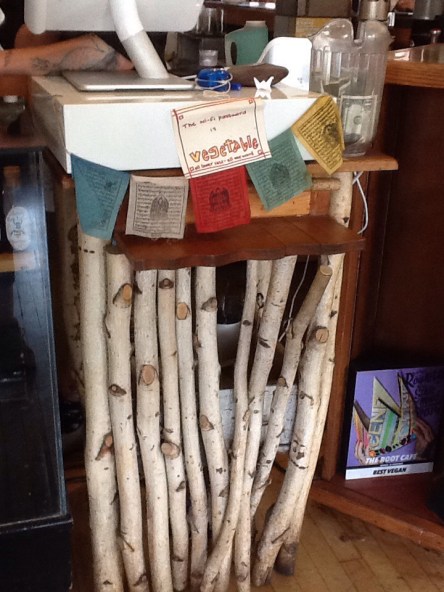I thought I would share some pictures uploaded by our recently retired newspaper food editor Judy Walker (seen in one picture in the hat with altar host, Subil Prosper) of her visits to St. Joseph’s Day altars around town. There are also pics of Mardi Gras Indians -taken by local photographer Roy Guste- as St. Joseph’s Day is also a public day for showing off their beadwork and parading.
The holiday is one of my favorites as it is a true New Orleans experience and involves food, superstition (or faith depending on how you look at it), “visiting” and tradition. Really, this is an extra-extraordinary day among many extraordinary days in New Orleans. The farmers market itself has hosted beautiful altars in years past, courtesy of food maven, media star, and Slow Food founder Poppy Tooker. Each item on the altar has meaning, some to honor different saints or the Trinity or local or family traditions.
Fava Beans
The fava bean was the main food that kept families in Sicily alive during the drought. Italians would carry this “lucky bean” with them for good fortune. If you pick up a dried bean from an altar on this day, you will receive good luck all year.
(I carry one in my wallet.)
Fish
The 12 fish represent the 12 apostles.
Breads Shaped into Symbols
Several breads are made that represent both Jesus and St. Joseph. The symbols include ladders, hammers, nails, saws, lilies, and a staff for St. Joseph; and crosses, palms and wreaths (for the crown of thorns) for Jesus.
Olive Oil and Wine
These serve as a reminder of the many vineyards and orchards in Sicily.
The altar is broken up on St. Joseph’s day and food and donations are then distributed to the poor.
March 19th marks the Catholic celebration of St. Josephs Day where Catholic New Orleanians construct elaborate altars in honor of this saint. The tradition, commemorating the relief St. Joseph provided during a famine in Sicily, began in the late 1800’s when Sicilian immigrants settled in New Orleans. Altars are found at local New Orleans churches, especially those with strong Italian roots, but they are also constructed in private homes, halls, Italian restaurants, and public spaces in different communities throughout the city. If you happen to see a fresh green branch over a local’s doorway, it means you’re invited to participate in the altar ceremony and to share the food.
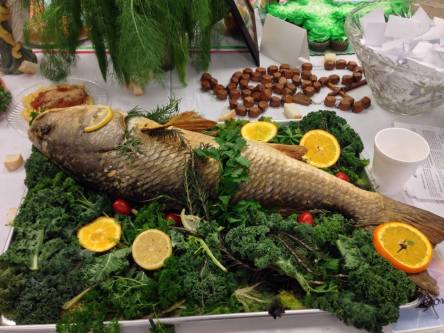
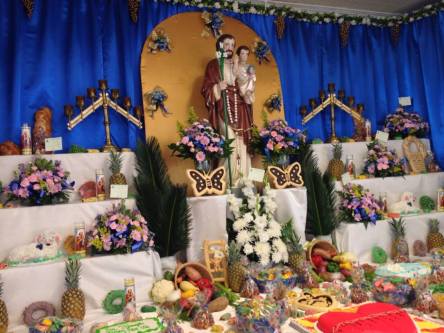


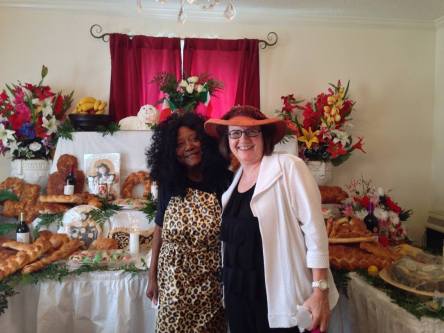



I’ve also heard raves from friends about this altar.
New Orleans had a large influx of Sicilians in the 19th century who celebrate their patron saint but it is also an important day for the Mardi Gras Indians for more obscure reasons. The Indians activities defy easy description as do their amazing handmade regalia, stitched by the wearers themselves on many a night after getting off their day job. The Indians’s traditions can be viewed at the Backstreet Cultural Museum in Treme and if you are lucky to be in New Orleans on Fat Tuesday and around St. Joseph’s Day or on the Sunday before, you can view these amazing artists on the streets of New Orleans.
this excerpt gives one explanation:
St. Joseph’s Night with the Wild Indians is not an experience to be taken lightly in any measure. It’s the living manifestation of an age-old ritual, preserved and practiced by the descendants of the African slaves, which goes back to the perambulating societies of West Africa and their call-and-response chants, the secret societies of masked warriors which are common to both African and native American cultures, and the unsanctioned moonlight ceremonies conducted by African slaves under pain of death on the plantations of the American South.
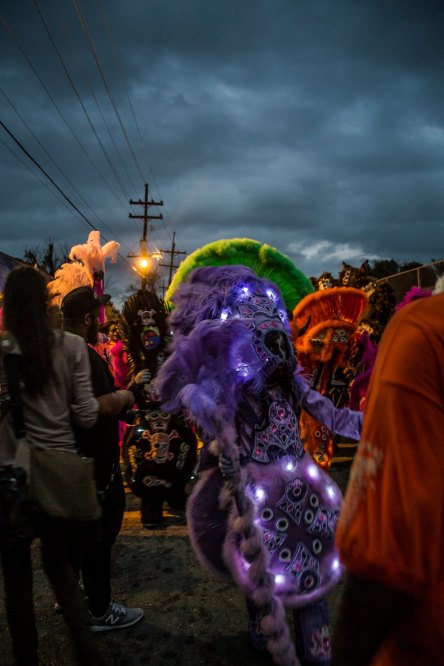
photo by Roy Guste

Joyce Montana (Widow of Big Chief Tootie Montana) and son Darryl Montana. Photo by Roy Guste
 THE+MATZO+PROJECT+CONSUMER+REQUEST
THE+MATZO+PROJECT+CONSUMER+REQUEST